Smartphones & Tablets | December 1, 2023
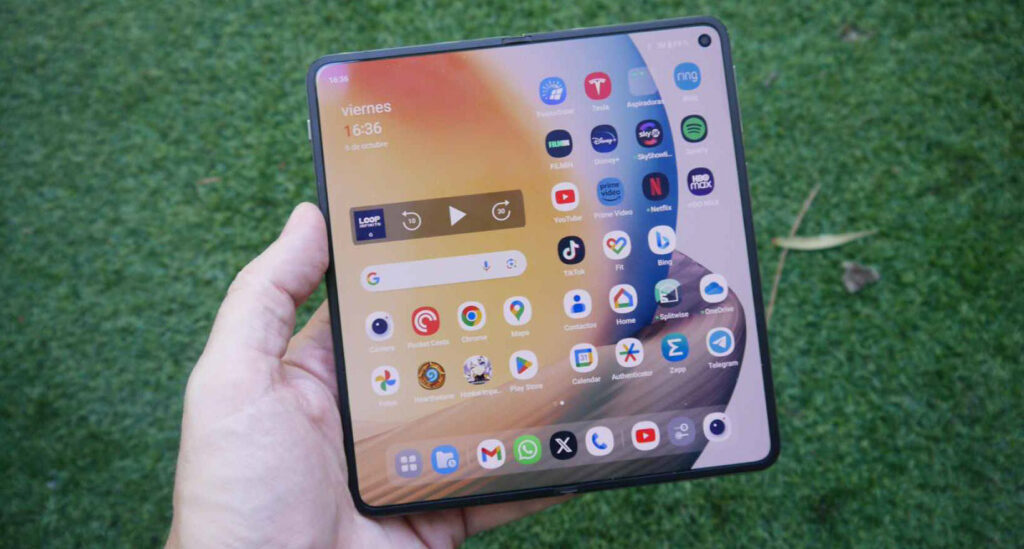
OnePlus has just announced the arrival of its new foldable smartphone, the company’s first entry into this segment of the market. The OnePlus Open has been with us for about two weeks, during which we’ve thoroughly analyzed it, and it has left us with a great impression, even in the face of strong competition.
It might seem surprising that OnePlus, which has been restructuring in recent years, has entered such a complex market as foldables. However, it makes more sense when you know that this phone has been “co-created with OPPO,” as the company’s representatives say. This is an elegant way of stating that this device is a version of another OPPO model, specifically the OPPO Find N3, an unannounced phone that won’t be coming to our country.
The OnePlus Open will be available on October 26th at a price of 1,849 euros, a high cost but in line with what we’ve seen from brands like HONOR, Samsung, or Huawei. It will be purchasable on the OnePlus website and Amazon.
OnePlus’ new smartphone is a foldable with a solid and compact construction. The hinge, made of aluminum, cobalt, titanium, and other materials, is one of the most robust in the market, with only 69 pieces compared to the over 100 elements in other foldable devices.
The hinge is supposed to withstand 1,000,000 folds, which should be enough to endure 100 openings per day for 10 years. Obviously, we couldn’t test the company’s claim, but the feel in the hand couldn’t be more positive.
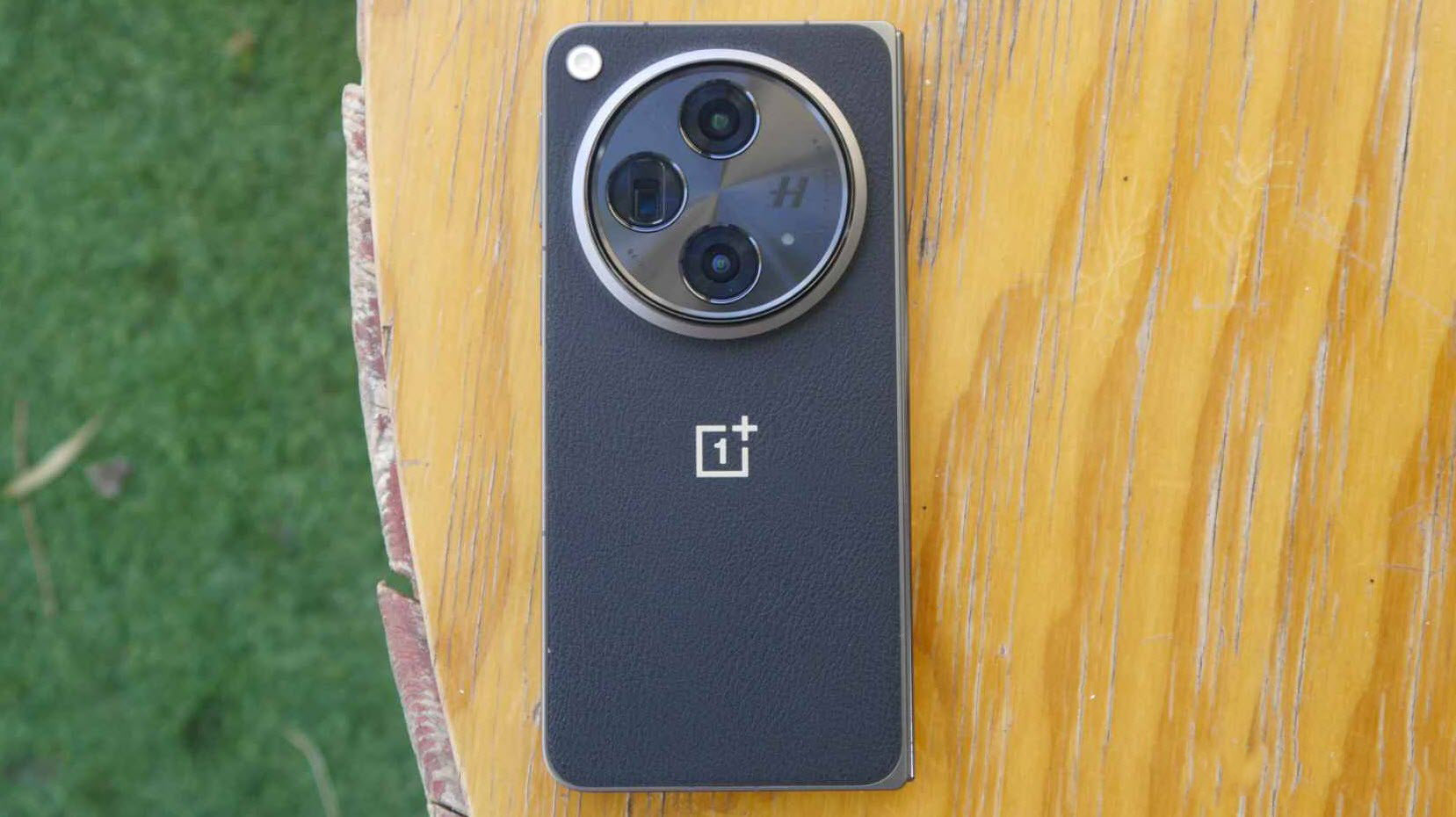
The device features an excellent external screen ratio and a waterdrop-shaped fold that minimizes the central crease. Additionally, it has four speakers that provide an immersive audio experience. The OnePlus Open is slightly heavy, although not for a foldable, with a weight of 245 grams.
The camera module is somewhat large and noticeable when held, both opened and closed. On the back, the finish with vegan leather is pleasant to the touch and provides a good grip. It includes a fingerprint sensor on the power button and high-quality buttons. Moreover, it has a sound slider, one of the characteristic features of OnePlus’ high-end phones, although already seen in OPPO models like the OPPO Find N3 Flip.
The OnePlus Open comes with the best specifications on the market. The processor is the Snapdragon 8 Gen 2, a chipset known for its high performance and energy efficiency. This processor can handle demanding applications and games smoothly, thanks to its eight-core architecture and a maximum clock speed of 3.2 GHz.
In terms of memory, this device has 16 GB of LPDDR5X RAM and 512 GB of UFS 4.0 storage, making it one of the devices with the highest storage capacity on the market. Additionally, it has 12 GB of virtual RAM, allowing better memory management and smoother performance.
It’s important to note that this device lacks a headphone jack and a microSD card slot. However, this shouldn’t be a problem since there are adapters to connect headphones to the device’s USB-C port, and the ample internal storage should be sufficient for most users. Another interesting feature of the device is its graphene heat dissipation layer, a highly conductive material with extremely high thermal capacity, helping to keep the device cool even during prolonged use.
In terms of connectivity, it’s worth highlighting the support for Wifi 7, Bluetooth 5.3, or dual-band GPS and NFC for mobile payments. The OnePlus Open doesn’t compromise on any aspect and clearly aims to be a reference in this small segment of the market – foldables.
OnePlus has taken care to create a foldable phone that is comfortable to use even when closed. Unlike some Samsung models, the OnePlus Open encourages using the external screen as if it were a regular phone. This 6.31-inch panel with a resolution of 2484 x 1116 FHD+ and an aspect ratio of 20:09 functions literally like any other mobile.
The screen has a punch-hole for the inner camera in the central upper part. The peak brightness of the screen is 2800 nits when viewing HDR content, reaching a normal 2100 nits. Additionally, the screen is compatible with HDR10, HDR10+, and Dolby Vision, providing a more immersive visual experience.
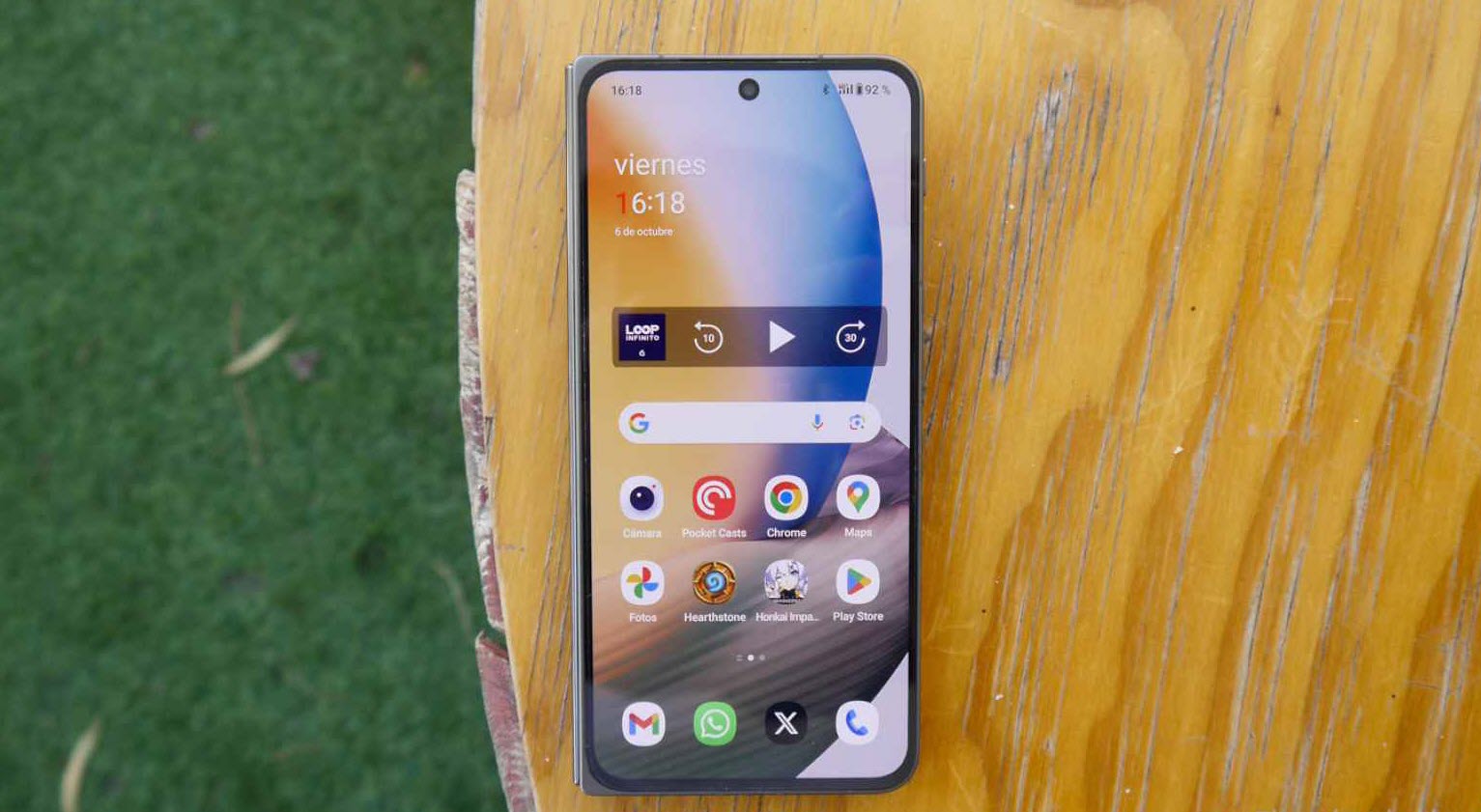
The panel also features LTPO 3 technology, allowing a refresh rate of up to 120 Hz, providing a smoother user experience and power savings by allowing the Hz to be lowered to 1. Overall, the device’s screen is capable of displaying all applications clearly, although we’ve occasionally encountered issues with some games the first time they are opened.
The internal screen is very similar in performance, with a diagonal of 7.28 inches and a resolution of 2440×2268 px, but with the same OLED technology, compatibility with HDR10, HDR10+, Dolby Vision, up to 120 Hz refresh rate, etc.
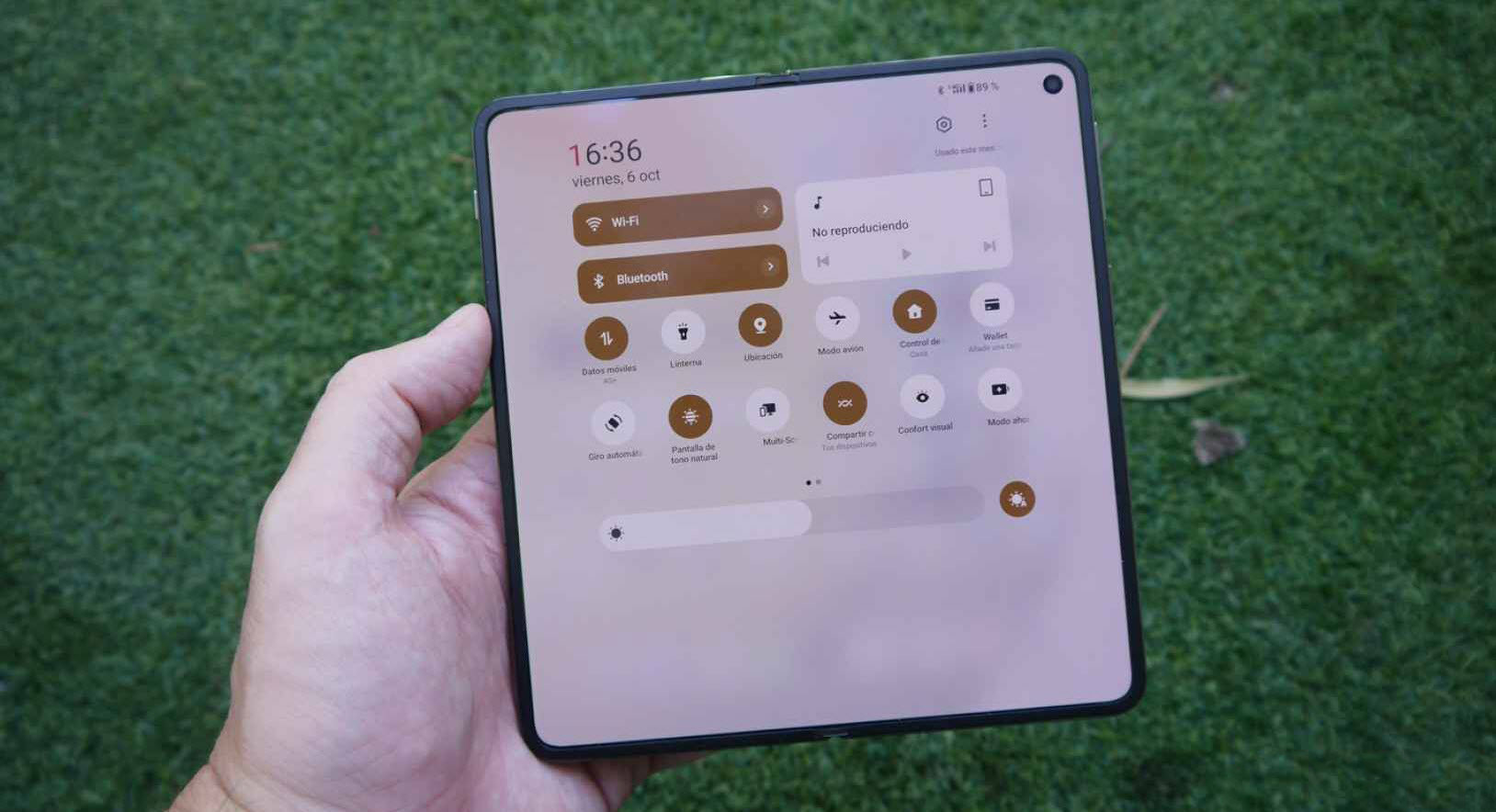
OnePlus has managed to make the crease barely noticeable, even when running a finger over it, although it becomes apparent upon closer inspection. The panel is protected by Ultra Thin Glass with a TPU protector. It has a punch-hole for the inner camera in one corner.
It’s clearly a screen that maximizes its potential when using two applications simultaneously, displaying apps as if there were two phones side by side. When consuming video content, space is lost since the ratio is almost 1:1, very different from what is commonly used to record and play multimedia content.
One of the best features of OnePlus in this phone is its camera system. Unlike most foldables, the company has wanted to make a strong bet in this area. They continue their collaboration with Hasselblad, now branded as Hasselblad Cameras for Fold.
The standout design feature is the huge rear camera module, which occupies almost half of the rear area of the phone when closed. Moreover, it protrudes quite a bit, which is logical given the need for a lot of space for the hardware, and this phone is not particularly thick. Since the module is centered, the phone can be comfortably placed on a table.
The main camera of this phone uses a new-generation Sony sensor called LYTIA T-808, which improves image quality in especially challenging situations. This 48 MP sensor, though it defaults to shooting at 12 MP, as is normal. It has an aperture of f/1.69 and optical image stabilization. OnePlus boasts of significantly improving portraits, but the cropping is still not up to the level of what Samsung, Google, or Apple achieve.
In low light, the quality is quite decent, with excellent light control and adequate detail, without introducing noise or flattening the image to make everything look flat. However, the colorimetry shift between the cameras needs revisiting, as it seems like photos were taken with different phones due to the significant color changes.

The second camera is an ultra-wide-angle of 48 MP, something noteworthy because brands like Samsung or Apple usually don’t provide such high resolution in these types of lenses. Chinese brands do, and OnePlus joins the trend. It is stabilized with OIS and has a fairly wide aperture of f/1.6.
The last sensor is the most peculiar. It is a telephoto with a 64 MP optical zoom, with an f/2.6 aperture and OIS. It can offer lossless 3x zoom, as well as one with a sensor crop of 6x. It’s unusual to see such a solution, a periscopic zoom for a 3x increase instead of 5x or more.

Regarding video, it can record 4K 60 fps video with any of the rear cameras, although it is capped at 4K 30 fps with the internal ones. Still, considering that there are 1400-euro phones that don’t record 4K with front cameras, we can’t complain.
As for the selfie cameras, there are two. The main one is on the external screen, with 32 MP, delivering quite good performance but sometimes with an overly forced use of HDR, resulting in images with very unrealistic colors. Moreover, at night, you need to be very still; otherwise, movement is faithfully reproduced in the image.
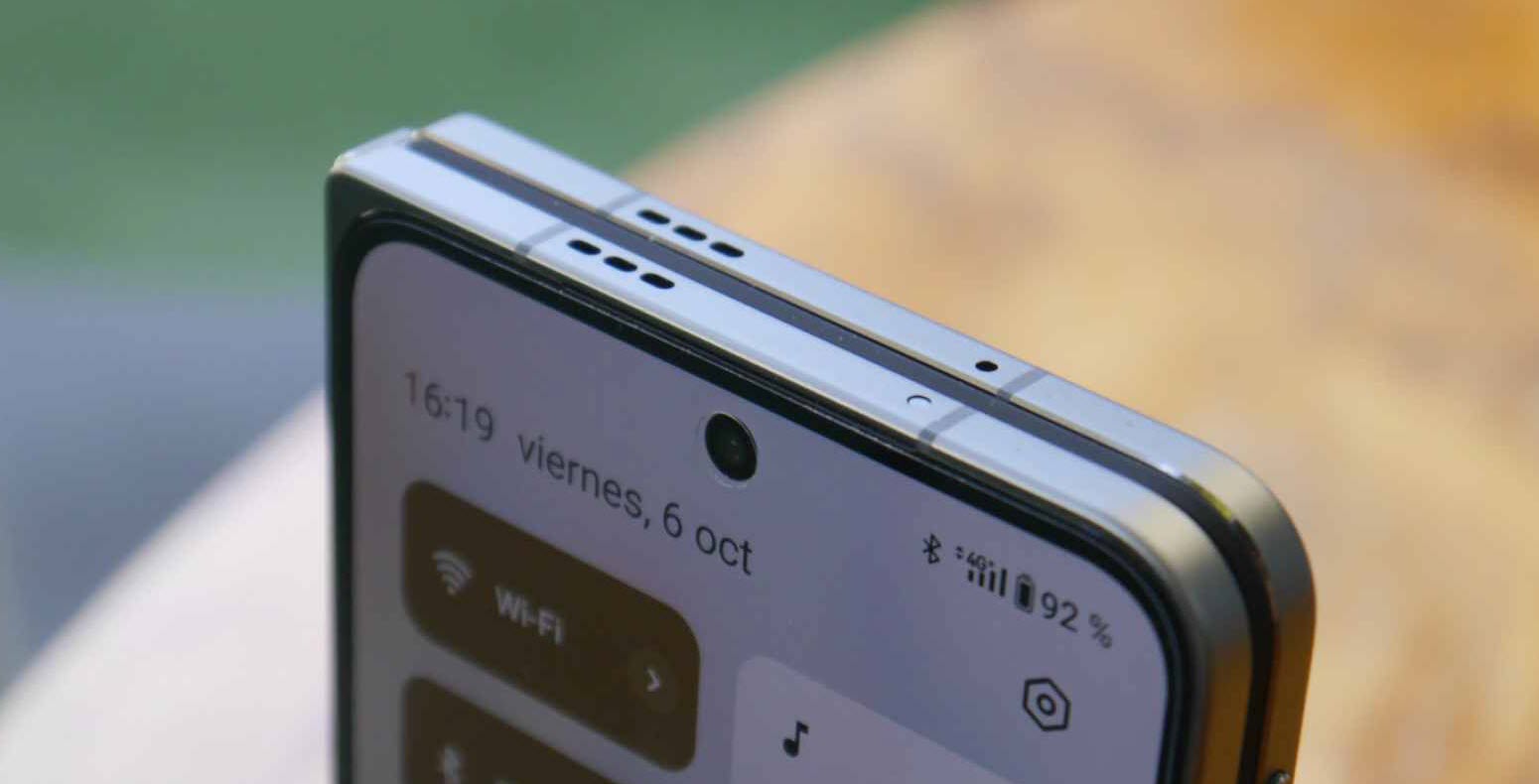
Inside, there is another sensor, mainly for video calls, with 20 MP, a more logical choice than Samsung’s 4 MP under-display approach. One of the best aspects of foldables is that you can use the main cameras to take selfies by using the provided software and leaving the phone open. Ergonomically, it’s not the most comfortable, but the jump in quality is noticeable.
The device’s battery has a capacity of 4805 mAh and can be charged with a 67 W charger included in the box. According to OnePlus, the battery can withstand up to 1600 charges before dropping below 80%. The device charges in 42 minutes with the included charger. Unfortunately, the OnePlus Open lacks wireless charging to avoid increasing thickness and weight.
In the first battery test, we used the phone exclusively under Wifi. This resulted in the screen having slightly lower brightness. We used it more often closed than open. We reached 6 hours of screen time with over 30 hours of total autonomy.
In the second battery test, we continued using the phone exclusively under Wifi. In this case, we significantly improved the figures, perhaps because we didn’t have to set up applications. We reached 7 hours of screen time with 35 hours of total autonomy.
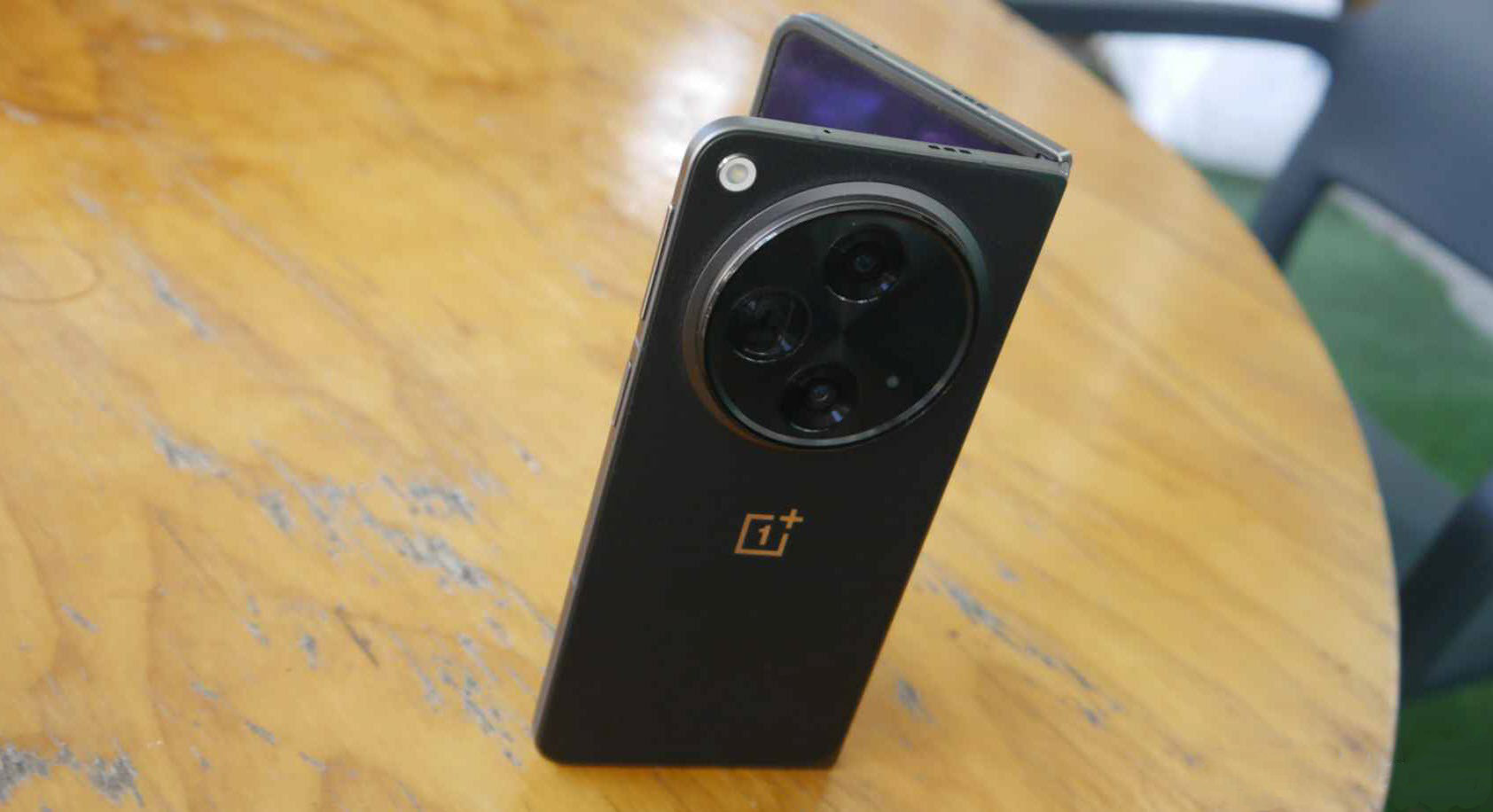
The third test was done using almost exclusively the internal screen, which should consume more power. The thing is, we played slightly less, and that made a noticeable difference. We reached 8 hours of screen time with 36 hours of total autonomy.
In the last test, we were out of the house half the time. This reduced the autonomy a bit, but it still surprised us. We reached 5 hours of screen time with over 30 hours of total autonomy.
Android 13, the penultimate version of Google’s mobile operating system, arrived last year with a strong focus on productivity. This is reflected in several new features and improvements that allow users to make the most of their smartphones’ screens, especially when it comes to foldables. In fact, a year earlier, there was even a version of the system designed specifically for them, Android 12L.
Oxygen OS 13.2, the version of the interface that the OnePlus Open runs, is an example of how these new features can be effectively implemented. The app dock has been redesigned to allow users to resize it, display recent apps, and include two shortcuts on the left side – recent files and apps. Multi-window functionality has also been enhanced, with a sidebar of apps facilitating the opening of new windows. Additionally, floating windows can now be resized to fit the user’s needs.
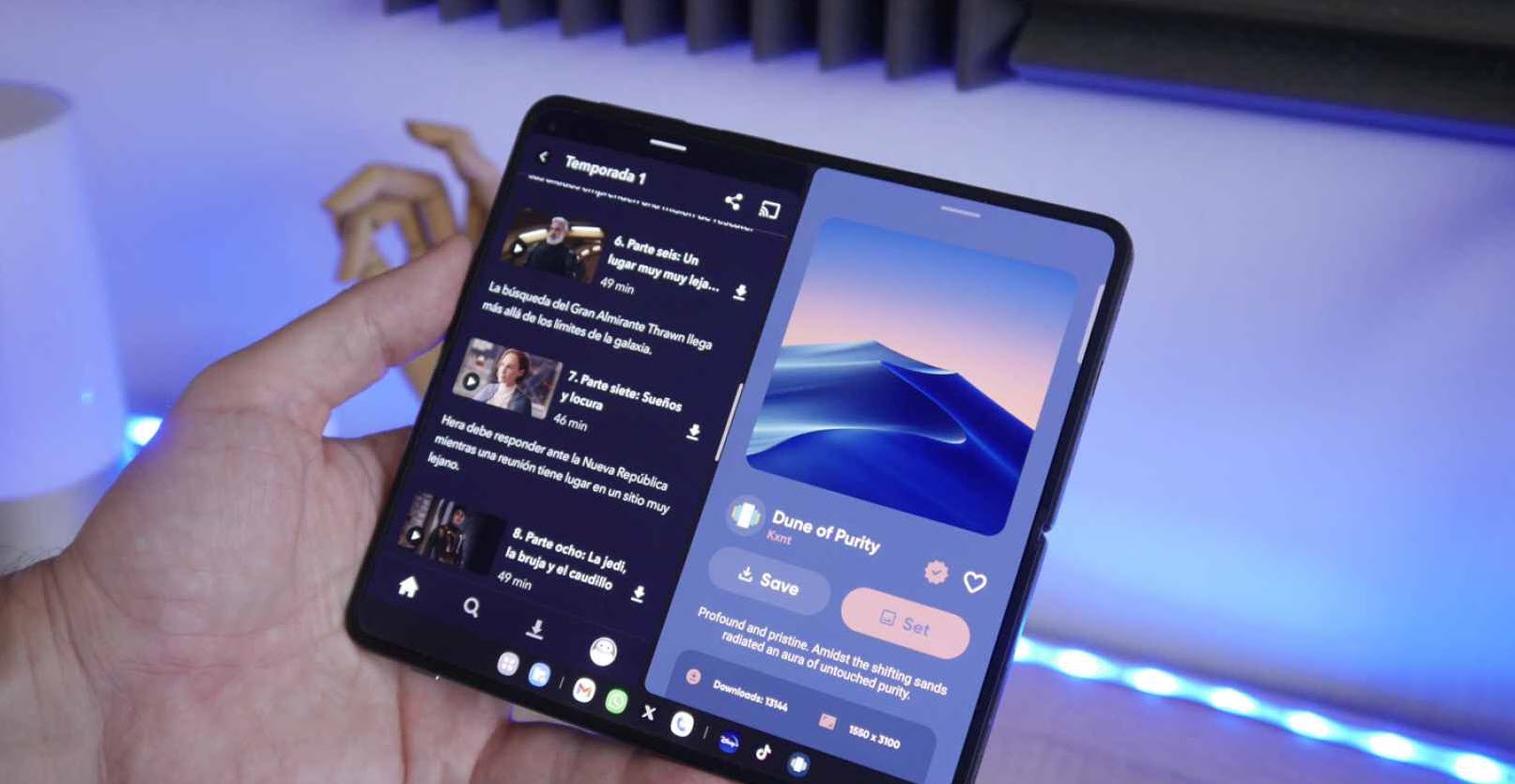
One of the most interesting features of Oxygen OS 13.2 is Open Canvas. This feature allows users to create a virtual screen that can be used to open apps and windows. This is useful for tasks that require a lot of space, such as photo or video editing. It’s a clever execution that we hope will be adopted by more manufacturers. But these aren’t the only novelties:
Together, these new features and improvements make Oxygen OS 13.2 an excellent choice for users looking for a smartphone that allows them to be more productive. The operating system offers a wide variety of tools and options to customize each user’s experience. OPPO has put a lot of effort into developing foldable software for its phones, and OnePlus has taken advantage of it.
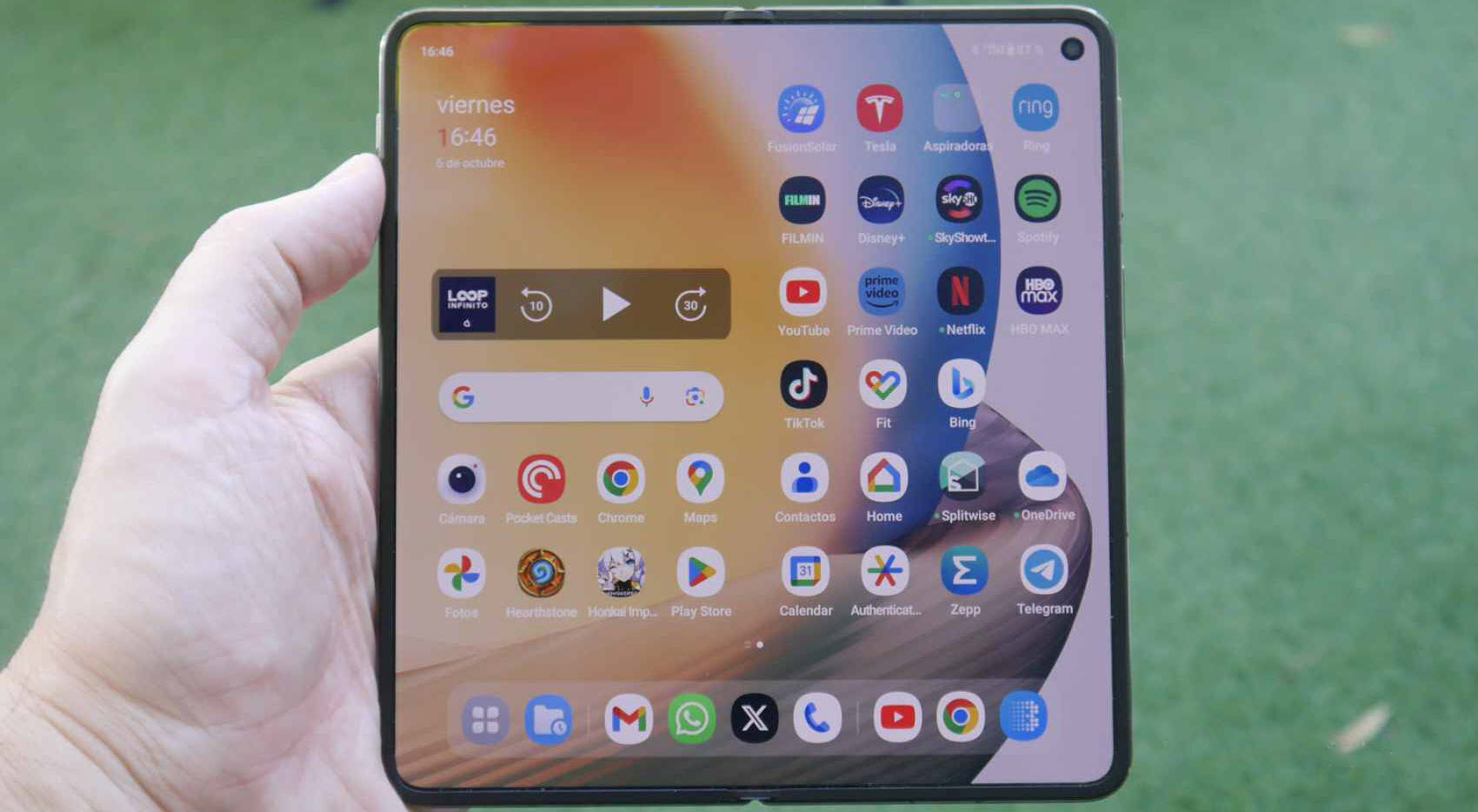
The app dock has been redesigned to allow customization. It not only displays chosen apps but also shows recent apps and includes shortcuts on the left side – recent files and apps. This facilitates access to frequently used apps and files.
Multi-window functionality has been enhanced, with a sidebar of apps that makes opening new windows easier. Now, we can drag and drop apps from the sidebar to open them in a new window. This makes it easier to open multiple apps simultaneously. Additionally, floating windows can be resized to fit the user’s needs.
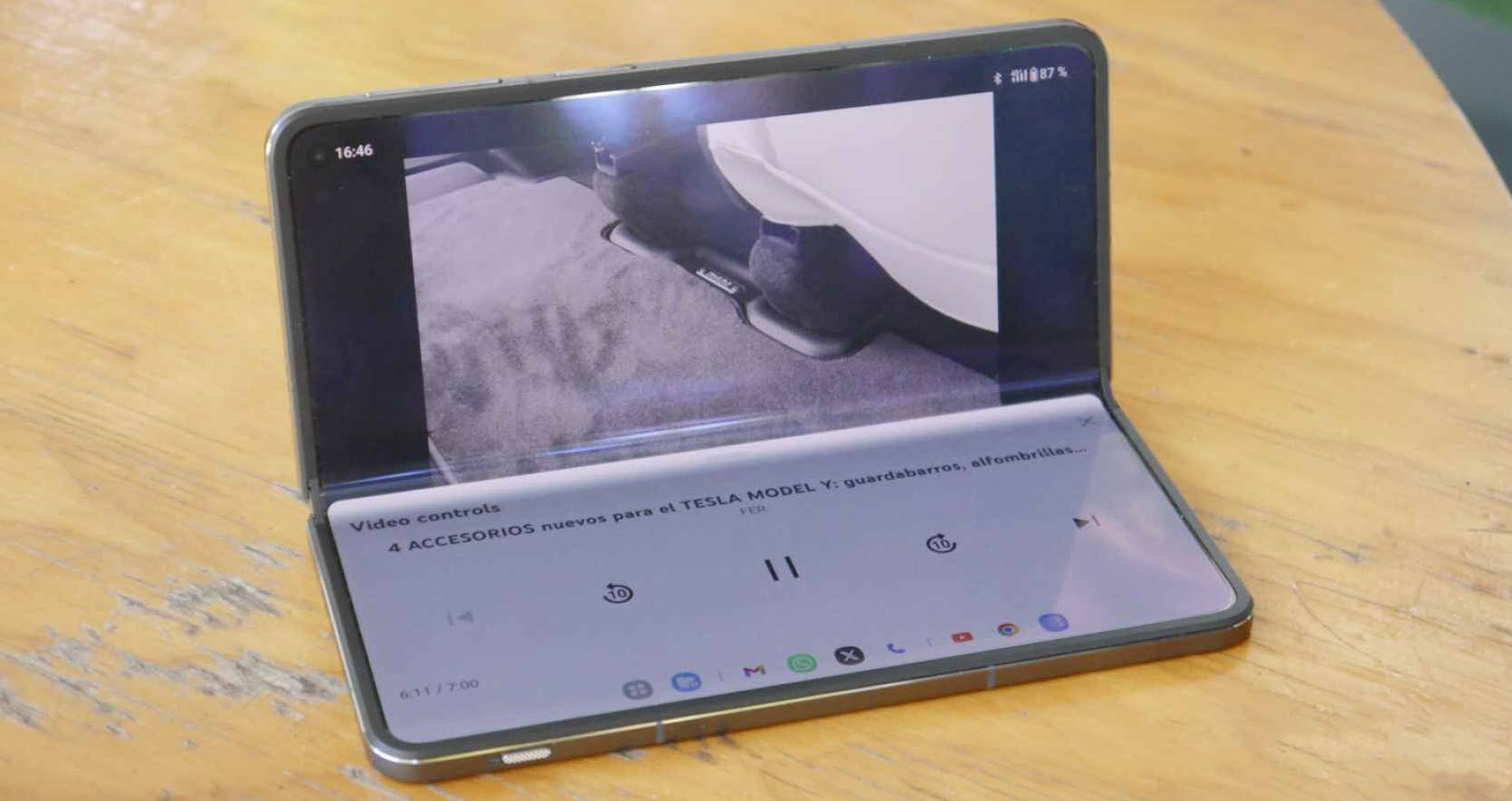
Open Canvas is a feature that allows users to create a virtual screen that can be used to open apps and windows. Open Canvas can also be used to split the screen into two or more sections, allowing users to work with multiple apps at the same time. We can move them around to bring them out of the screen or into it, emulating the scrolling effect popular in social media apps.
Usable Folders are a feature that allows users to create folders of apps that can be used without having to enter the folder. This is not entirely new, but it is leveraged much more on a phone with such a large screen as the OnePlus Open.
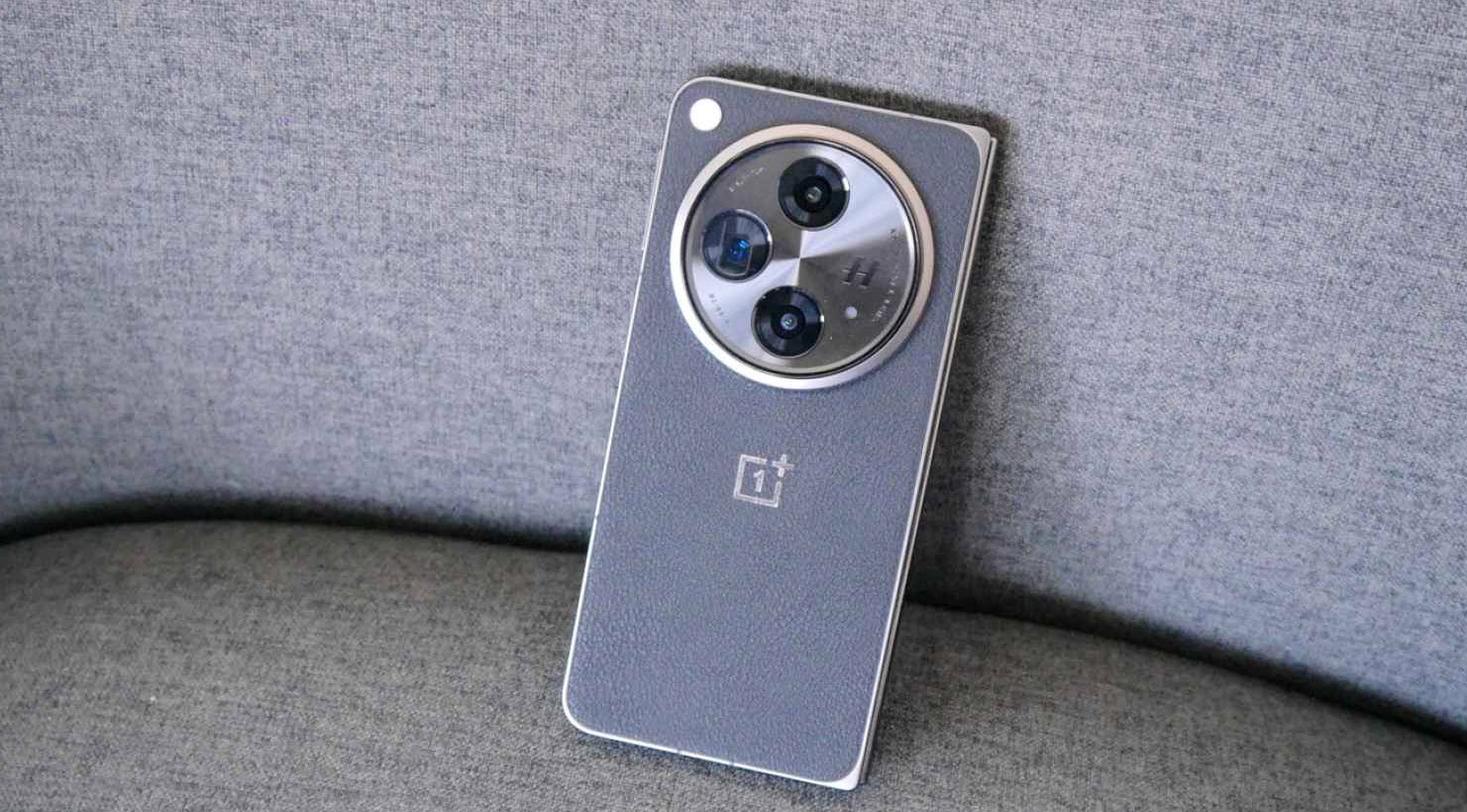
Document Dragging is a new feature that allows users to drag documents onto open apps. This is useful for tasks that require opening documents in multiple apps, such as document editing or presentation creation.
OnePlus has surprised everyone with a genuinely good phone. It’s an expensive device and not for everyone. But that’s the case with literally every book-type foldable on the market. The user base is still small, but the effort from OPPO, seen through OnePlus, finally makes it feel like Samsung’s Galaxy Z Fold has direct competition, not just in hardware but in software, which is much more important.